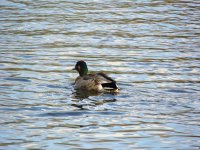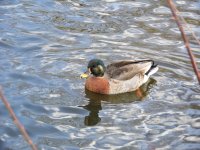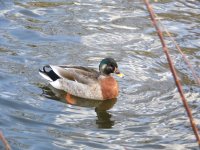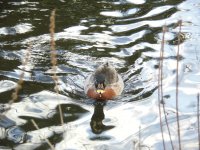stevethehydra
Well-known member
Seen on 3rd November on the duck pond at Alexandra Park, Manchester. I have a few more photos but these are the best.
I think this has to be a hybrid, and it's fairly obvious that one parent is Mallard, but what is the other? It was distinctly smaller than wild-type Mallards, larger than Tufted Ducks - perhaps around Gadwall/Wigeon size. Structurally the most obvious thing that struck me about it was its disproportionately small head and bill (but not the "cutesy" stubby-billed look of "dwarfed" domestic breeds like Call Duck - more like if someone had attached the front end of a smaller duck to the back end of a bigger one!)
It doesn't seem to match any of the well-known Mallard hybrids with species like Teal, Gadwall, Wigeon, Pintail etc plumage-wise. The nearest I could find online (particularly for the flank pattern) was some of the examples here of Mallard x Spot-billed Duck Mallard x Indian Spot-billed Duck (and the bill is a bit similar to some of the more Spot-billed-like, perhaps backcrossed birds, although the head pattern is closest to the possible backcross to Mallard) - but Spot-billed is more or less identical to wild-type Mallard in size and structure. I can't find a smaller dabbling duck species which could also explain the flank pattern.
Any ideas?
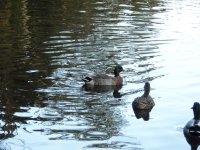
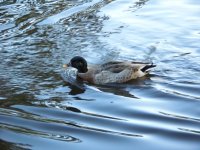
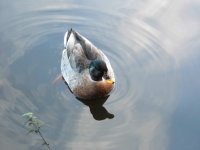
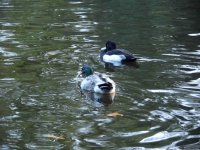
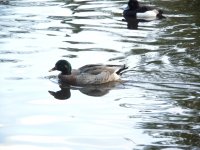
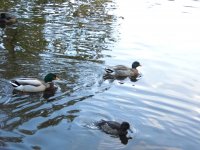
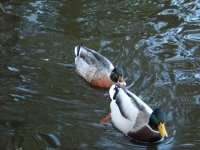
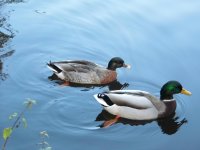
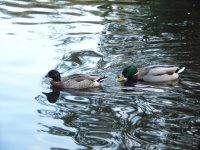
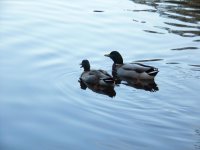
I think this has to be a hybrid, and it's fairly obvious that one parent is Mallard, but what is the other? It was distinctly smaller than wild-type Mallards, larger than Tufted Ducks - perhaps around Gadwall/Wigeon size. Structurally the most obvious thing that struck me about it was its disproportionately small head and bill (but not the "cutesy" stubby-billed look of "dwarfed" domestic breeds like Call Duck - more like if someone had attached the front end of a smaller duck to the back end of a bigger one!)
It doesn't seem to match any of the well-known Mallard hybrids with species like Teal, Gadwall, Wigeon, Pintail etc plumage-wise. The nearest I could find online (particularly for the flank pattern) was some of the examples here of Mallard x Spot-billed Duck Mallard x Indian Spot-billed Duck (and the bill is a bit similar to some of the more Spot-billed-like, perhaps backcrossed birds, although the head pattern is closest to the possible backcross to Mallard) - but Spot-billed is more or less identical to wild-type Mallard in size and structure. I can't find a smaller dabbling duck species which could also explain the flank pattern.
Any ideas?















